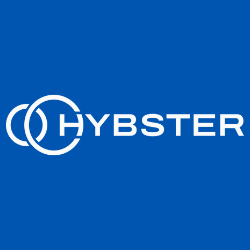You may have read, here or there, that 3D printing would replace plastic injection in the longer or shorter term. Notre avis n’est pas tout à fait aussi tranché !
Originally considered to be competing technologies, These techniques are now widely recognized as each having unique advantages and can even be used together to help maximize production efficiency.
C’est pourquoi il nous a semblé important de faire ce comparatif injection plastique vs impression 3D ?
QUAND UTILISER L’IMPRESSION 3D OU LE MOULAGE PAR INJECTION PLASTIQUE ?
The use of 3D printing in innovative and experimental scenarios is frequently shown in the media, but the reality is that the majority of today's plastic parts are made by injection molding. This choice is understandable given the way the process allows for quality control, cost control and the manufacture of complex assemblies, by injection moulding or bi-material injection with tight tolerances.
3D printing and the plastic injection molding are both useful and competitive processes, as are cnc machining by shooting or milling.
3D printing has given engineers the ability to create plastic models from their desks and bring them to life in a matter of hours. Injection molding, on the other hand, is synonymous with quality and value. It is commonly used to quickly and reliably produce large volumes of complex plastic designs.
For project leaders, startups or manufacturers who are wondering if plastic injection molding or 3D printing is the right process for their next project, we'll explain when to use each technique and how they can be used collectively to support each other.
plastic injection vs. 3D printing
3D printing
- Fast turnaround times (1 to 2 weeks)
- Small series production (100 pieces or less)
- Designs with frequent changes
- Parts or components made of plastic relatively small
Plastic injection moulding
- Des délais d’exécution plus longs (5 to 7 weeks for single parts)
- Mass production (more than 500 pieces per series)
- Final design of the part (Minor modifications) Parts of any size or complexity.
What about the performance of the prototypes?
Évidemment, les fabricants d’imprimantes 3D ou de résines vous indiquerons que les pièces imprimées en 3D sont résistantes, et capable de ceci ou cela, et c’est globalement VRAI !
Il en est de même pour les pièces plastiques moulées par injection plastique.
Le point le plus important est de savoir d’ou l’on vient, afin de comprendre ou on va ! (c’est philosophique non ?)
Small series
- Your product will be made in 3D printing : Pas de souci, votre prototype sera la première d’une série de XX pièces. Vous pouvez faire des tests représentatifs de montage, d’utilisation
- Will your product be manufactured by injection or thermoforming? Le prototype aura des caractéristiques matériaux, performance, endurance, différents de votre pièce série. Il se peut que la pièce prototype soit moins performante que la pièce série (Dans ce cas, vous êtes a peu prés couverts), mais l’inverse est également possible…et dans ce cas, la pièce série sera un peu plus longue à mettre au point, et les couts de modification des moules sera à prendre en compte !!
Medium - Large series
- Will your product be manufactured by injection or thermoforming?
Ne tirez pas de conclusion hâtive du prototype réalisé en SLS, SLA ou FDM. Même si le matériau a le même nom, ses performances ne sont JAMAIS identiques ! La pièce imprimée en 3D peut vous servir à montrer à illustrer un concept, faire réagir des utilisateurs….à valider une fonction simple d’assemblage, mais pas tout en même temps ! Seul un prototype « Bonne matière » vous permettra de passer avec succès toutes les étapes de validation de votre projet.

